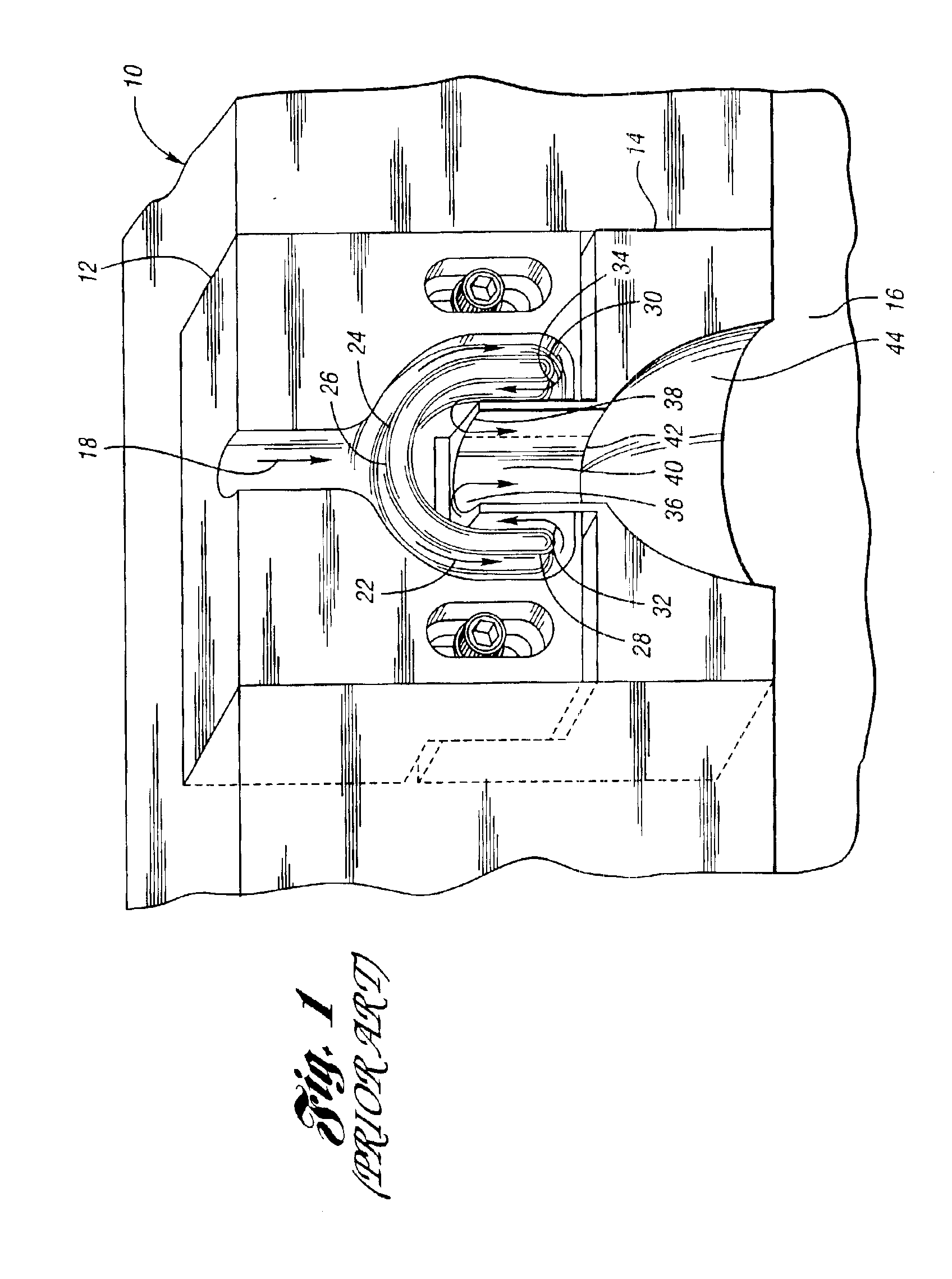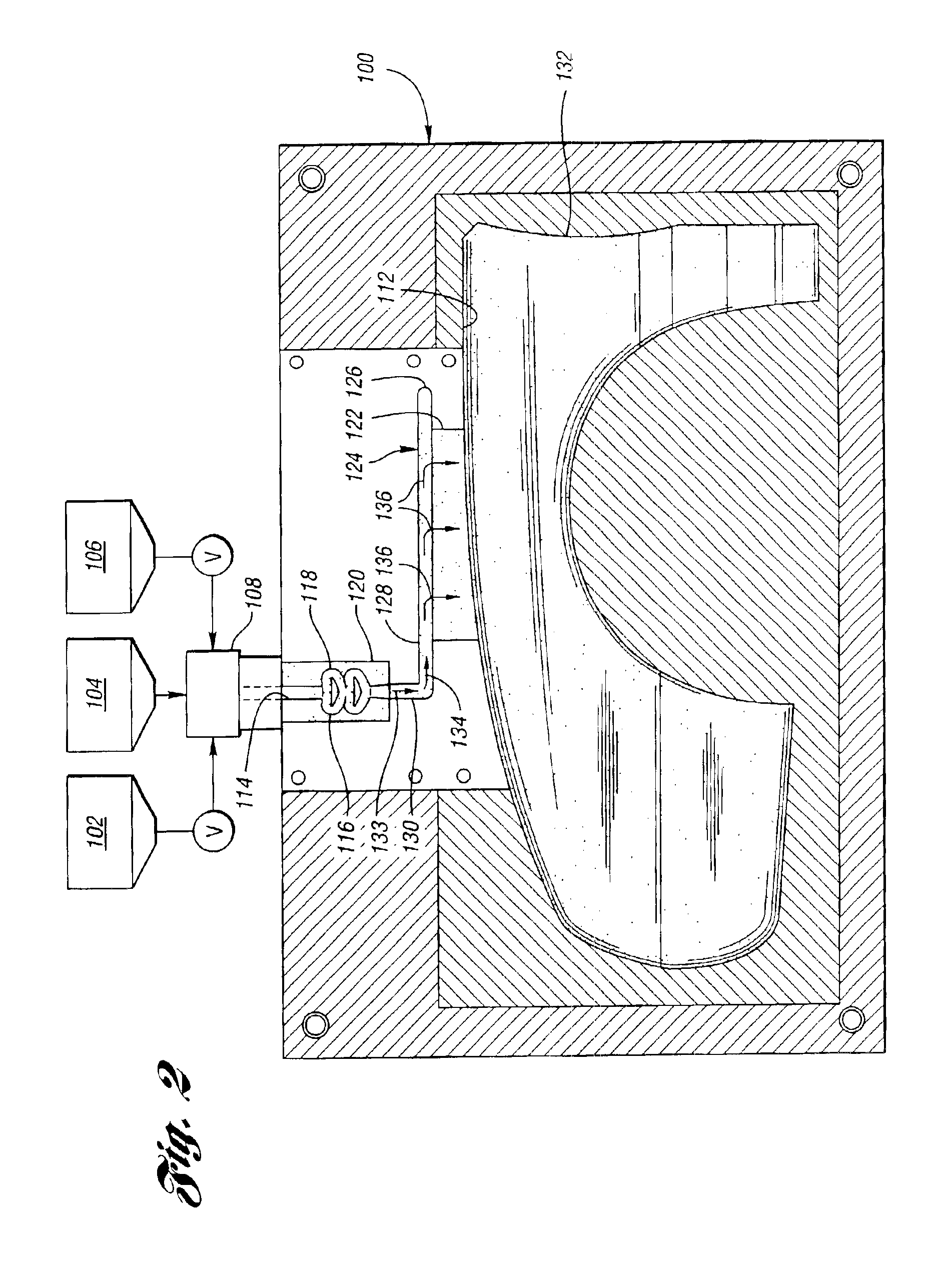Method for making a reinforced, polymeric article in a reaction injection molding system and mold for use therein
a polymer and injection molding technology, applied in the field of methods for making reinforced polymeric articles, can solve the problems of uneven distribution of chemicals, entrainment of air, and difficult rigid foam applications, and achieve the effect of less surface waviness or flow lines
- Summary
- Abstract
- Description
- Claims
- Application Information
AI Technical Summary
Benefits of technology
Problems solved by technology
Method used
Image
Examples
Embodiment Construction
[0029]The present invention is generally an improved method, a mold used therein, and a part formed thereby wherein a novel gating system is used in the method and mold. Referring to FIGS. 2 and 3, the mold, generally indicated at 100, is typically used in a reaction injection molding system for making a reinforced polymeric article having reduced surface defects. The molding system typically includes sources 102, 104 and 106 of material which make up a curable, multi-component reaction fluid mixture such as a liquid urethane material. The urethane material may include a polyol resin component, an isocyanate constituent, a catalyst and a filler. An example of such commercially-available systems is Bayflex® 190, as previously mentioned, having a mica filler of approximately 18%.
[0030]Components or constituents of the urethane material are injected from the sources 102, 104 and 106 into a high pressure mixing apparatus 108 by way of respective metering devices. The fluid mixture with ...
PUM
| Property | Measurement | Unit |
|---|---|---|
| length | aaaaa | aaaaa |
| size | aaaaa | aaaaa |
| surface quality | aaaaa | aaaaa |
Abstract
Description
Claims
Application Information
 Login to View More
Login to View More - R&D
- Intellectual Property
- Life Sciences
- Materials
- Tech Scout
- Unparalleled Data Quality
- Higher Quality Content
- 60% Fewer Hallucinations
Browse by: Latest US Patents, China's latest patents, Technical Efficacy Thesaurus, Application Domain, Technology Topic, Popular Technical Reports.
© 2025 PatSnap. All rights reserved.Legal|Privacy policy|Modern Slavery Act Transparency Statement|Sitemap|About US| Contact US: help@patsnap.com



